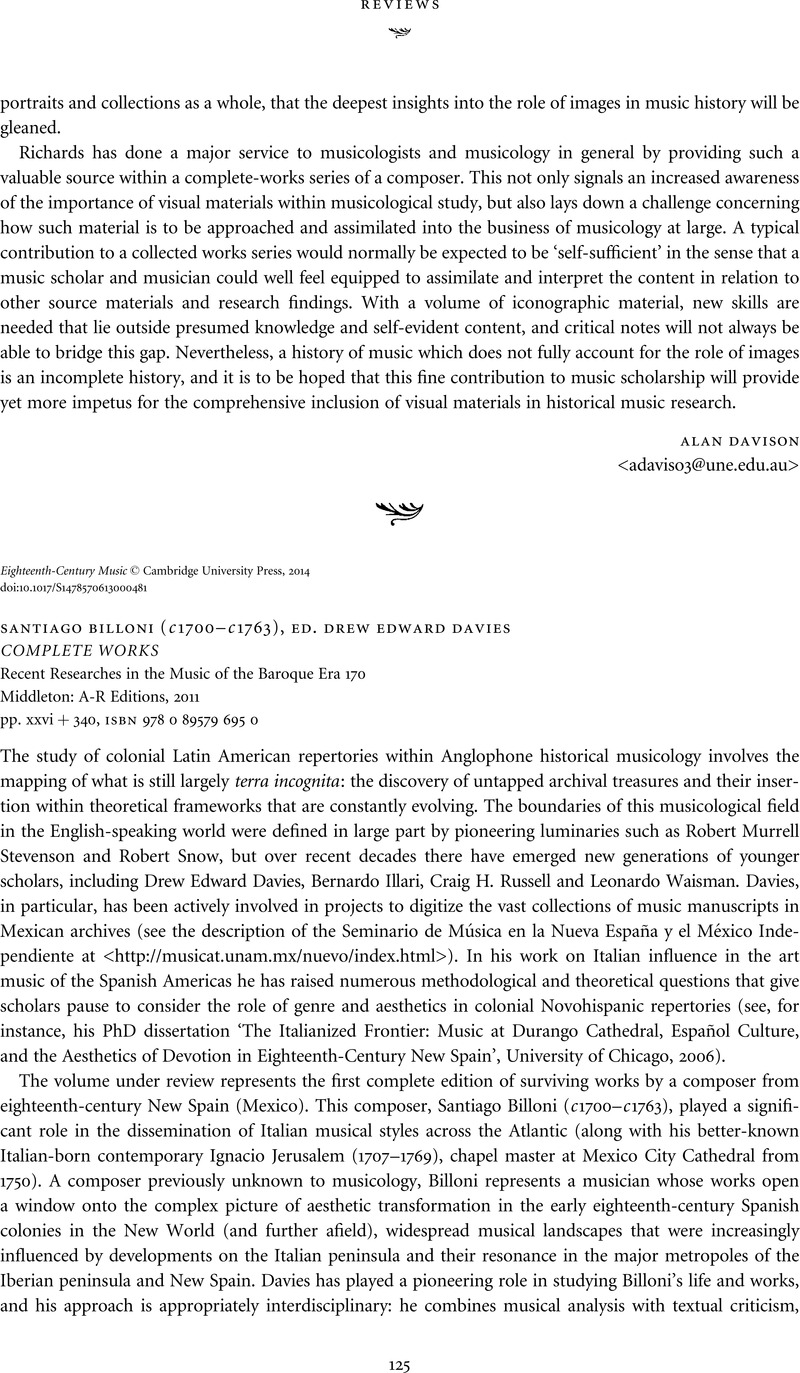No CrossRef data available.
Article contents
SANTIAGO BILLONI (c1700–c1763), ED. DREW EDWARD DAVIES COMPLETE WORKSRecent Researches in the Music of the Baroque Era 170Middleton: A-R Editions, 2011pp. xxvi+340, isbn978 0 89579 695 0
Published online by Cambridge University Press: 03 February 2014
Abstract
An abstract is not available for this content so a preview has been provided. Please use the Get access link above for information on how to access this content.

- Type
- Reviews: Editions
- Information
- Copyright
- Copyright © Cambridge University Press 2014




